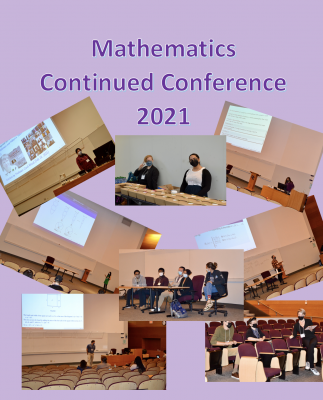Plenary Speakers:
Sandra Kingan
Biography: Sandra Kingan is an Associate Professor at Brooklyn College and the Graduate Center of the City University of New York. Her research lies at the intersection of combinatorics and geometry. She has published papers in matroid theory, graph theory, and combinatorial algorithms. Her book “Graphs and Networks” blends classical graph theory with modern network science and is available for preorder. She is a co-organizer of the Women in Graph Theory Research Network and a Math Alliance mentor.
Title: Graph Theory: From Königsburg to Connectomes
Abstract: A graph is a set of points called vertices joined by lines called edges. A complex network is a real-world graph, so large and complicated that it can only be studied empirically. The vertices and edges of a complex network may not be fully known or may be constantly changing. For example, the neurons in the brain linked by synapses (called a connectome), the Internet with wired or wireless links between computers, the web graph with hypertext links connecting webpages, networks of people where the link is based on some sort of relationship (called social networks) or catching a contagious disease (called pandemic networks) are all complex networks. In this talk I will take you on a tour of graph theory from its origins in puzzles and games to modern applications in biology and the social sciences. Along the way I will describe a project on edge centrality and line graphs that my summer REU students Rohma Khan, Remi Laurence, Ana Osorio-Alvarado, and Zaeema Tamur did.
Ling Xiao
Biography: Professor Ling Xiao received her PhD from Johns Hopkins University. She is currently an Assistant Professor at the University of Connecticut and has held positions at Cornell University and Rutgers. She also received a Postdoc Fellowship from Mathematical Sciences Research Institute. She works in Geometric Analysis and Partial Differential Equations.
Title: Mean curvature flow
Abstract: Mean curvature flow occurs in the description of the evolution of the interfaces in several multiphase physical models. One can use this flow as a tool to obtain classification results for hyper-surfaces satisfying certain curvature conditions, to derive isoperimetric inequalities, or to produce minimal surfaces. In this lecture, we will explain what mean curvature is. I will then describe recent development in the research of mean curvature flow.
Schedule:
Saturday, October 23rd
University of Connecticut, Storrs, CT
For the details please go to Abstracts. All times are in EDT (Eastern Daylight Time).
| 8:45-9:00 am | Check-in and opening remarks | ||
| 9:00-10:00 am | Plenary talk I (MCHU 102) |
“Mean curvature flow” | by Prof. Ling Xiao |
| 10:05-11:30 am | Activities | Activity I (Michael Urbanski) in MCHU 101 |
Activity II (Rachel Bailey) in MCHU 102 |
| 11:30-12:00 pm | Wellness Break | Go outside 🙂 | |
| 12:10-1:00 pm | Graduate school panel | ||
| 1:05-2:30 pm | Activities | Activity III (Liangbing Luo) in MCHU 101 |
Activity IV (Erik Wendt) in MCHU 102 |
| 2:30-3:00 pm | Poster session | for posters go to Posters 2021 | |
| 3:00-4:00 pm | Plenary talk II (MCHU 102) |
“Graph Theory: From Königsburg to Connectomes” | by Prof. Sandra Kingan |
Organizers: Corrie Ingall, Anastasiia Minenkova, Kimberly Savinon.